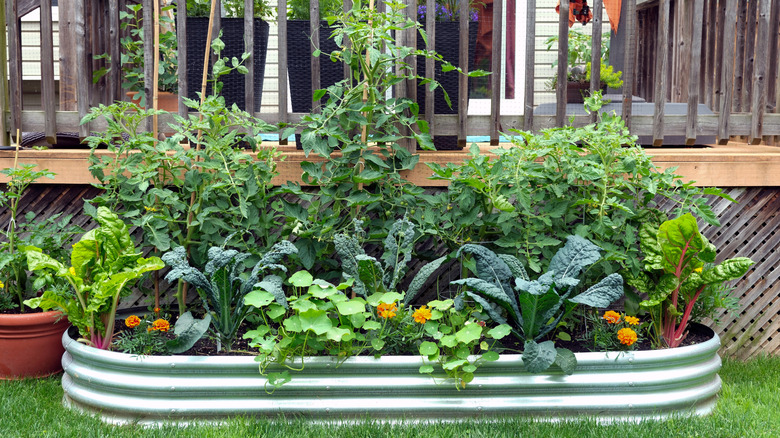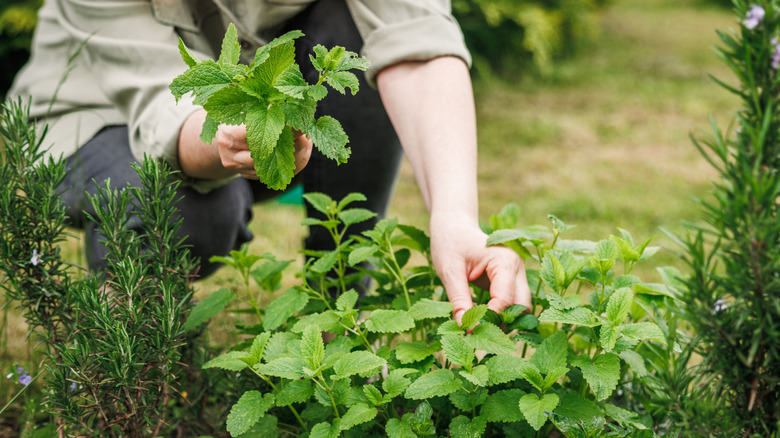Utilize A Raised Bed To Grow Your Own Thriving Herbal Tea Garden
There is something deeply satisfying about drinking tea made from herbs that you've grown yourself. Whether you started the plants from seedlings or transformed small bushes into a lush garden landscape, having access to an herbal tea garden means you're never too far from a fresh, flavorful brew. Starting your day with a sprig of peppermint or a rich lemon verbena can make a world of difference. But if you're stuck on where to begin your tea-growing project, or you just don't have access to an expansive amount of space, a raised garden bed is the perfect place to start. It offers an ideal setup for beginner gardeners and seasoned herbalists alike, providing more control and less maintenance than planting your herbs directly in the ground.
Raised garden beds offer a number of practical benefits in terms of herbal tea growing conditions. For starters, many tea varieties prefer well-draining soil that is exposed to bright, full sunlight for extended periods of the day. You are able to create the perfect soil mixture for growing herbs, making it easier to produce healthy and fruitful plants. Raised garden beds also warm up faster in the spring, which means you can begin planting and nurturing your teas much earlier. This also contributes to a longer growing and harvesting period, allowing you to enjoy the full potential that your teas have to offer. Plus, lifted plants mean there will be less competition from weeds, as they tend to grow less often in raised garden beds. Once your beds are completely set up, it will become more than just a garden, transforming into a year-round source of wellness that makes its way into your daily routine.
Creating a raised tea garden
Building your own raised garden beds doesn't require any complicated woodworking knowledge or tools: a couple of 2-inch by 4-inch planks of plywood should do the trick. Start by deciding on the right location to plant your tea garden. It should be in a fairly sunny spot of your yard, as most tea varieties require six to eight hours of sunlight each day. Choose a raised bed that is at least 18 inches deep, providing plenty of space for your plants to take root. Fill it with a mix of high-quality soil and compost to create a rich, well-draining environment. If you're working with a gardening bed kit, ensure that the materials are well suited for garden beds to avoid chemicals leaching into the soil. Once your raised garden bed is built and placed, rake the soil until it is smooth and water it lightly before planting to help your herbs settle into their new home.
As you plan out your garden, think about how each plant will grow. Fast growing herbal tea options like mint should be given a designated space or confined to containers to keep them from taking over the entire space. Taller plants like lemon verbena or echinacea can be placed at the rear or center of your garden beds, with low growing plants like thyme or chamomile placed at the edges for easy access. Try to group certain herbs together based on their individual needs, whether it's space requirements or watering schedule. You can mulch your garden beds lightly to help retain some of the moisture in the soil and to help keep weeds at bay. As your herbs begin to grow, harvest them lightly to encourage bushier growths.

